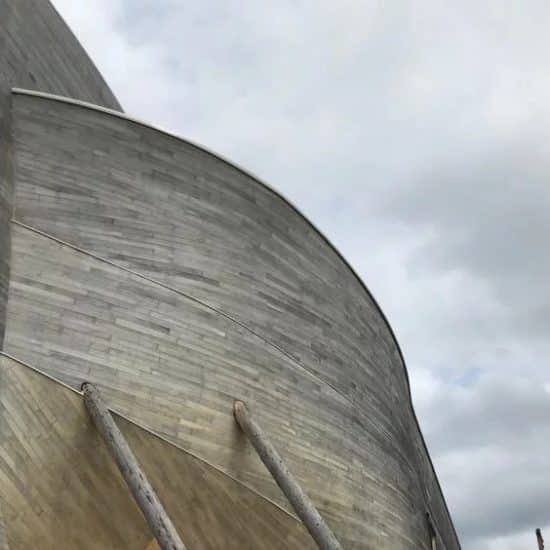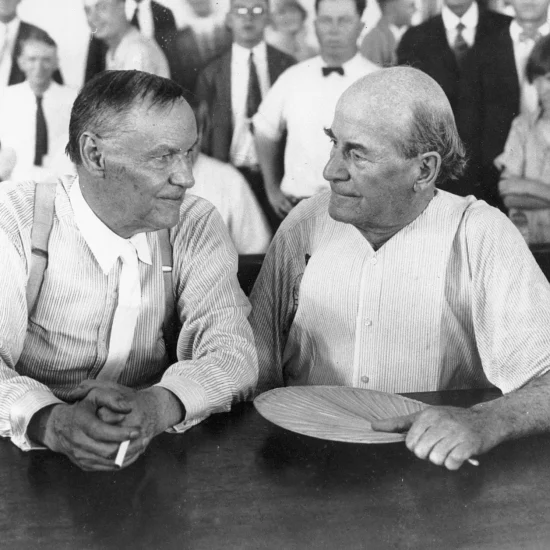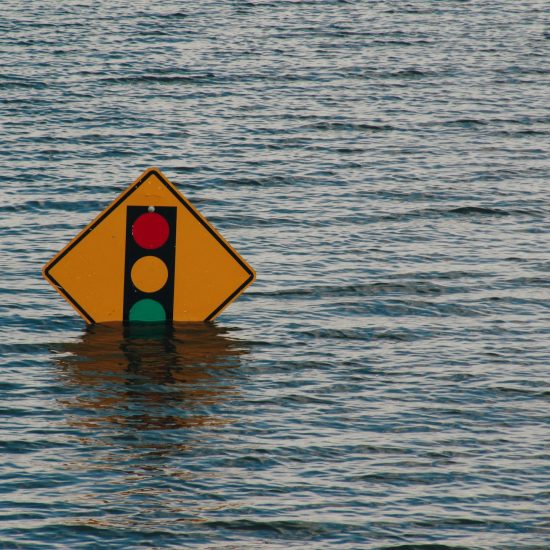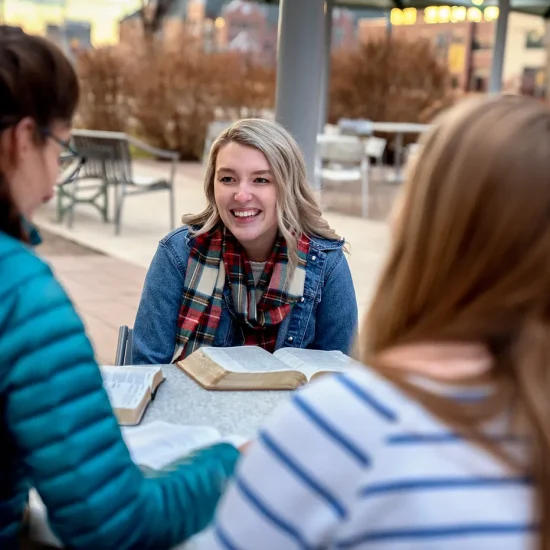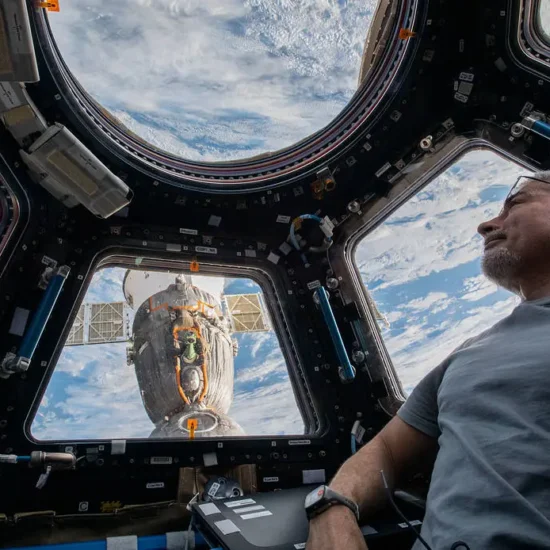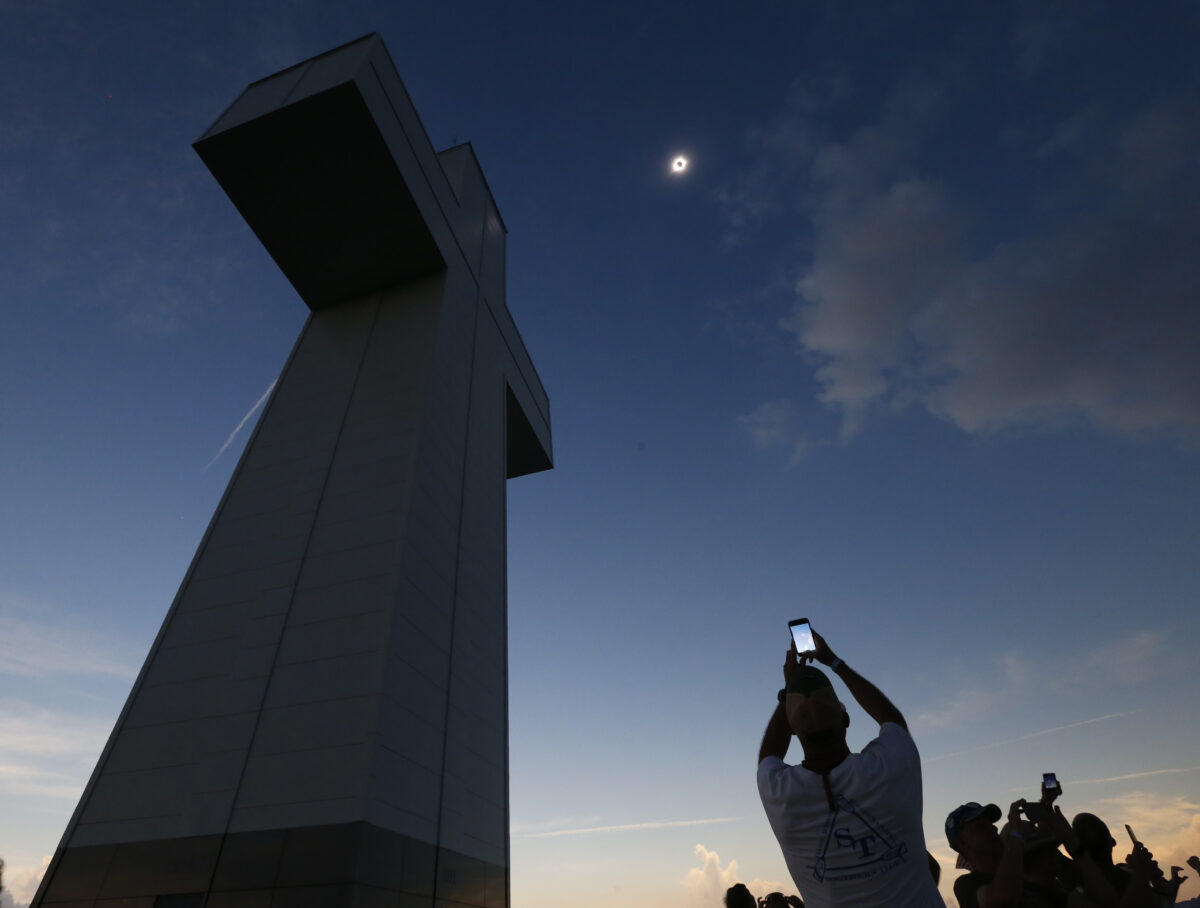
(RNS) — The special glasses have been delivered. The portable toilets have been ordered.
Now, for expectant sky watchers and for property owners — including a number of churches — in the path of the total solar eclipse Monday (April 8), it’s just a matter of waiting and hoping for good weather until the eclipse begins.
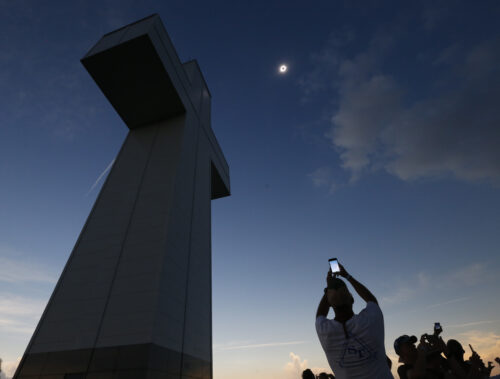
A total solar eclipse is seen above the Bald Knob Cross of Peace, Aug. 21, 2017, in Alto Pass, Ill. Small towns and rural enclaves along the path of April 2024’s total solar eclipse are steeling for huge crowds of sun chasers who plan to catch a glimpse of day turning into dusk in North America. Throughout history, solar eclipses have had a profound impact on adherents of various religions around the world. They were viewed as messages from God or spiritual forces, inducing emotions ranging from dread to wonder. (AP Photo/Charles Rex Arbogast, File)
Across the swath of the United States stretching from Texas to Maine where “totality” is expected, clergy have come up with ways to make the most of the astronomical show — handing out those glasses, giving out-of-towners a place to park and observe the event, and even offering locals the opportunity to be baptized near the time of near-total darkness.
Billy Glover, pastor of Steel City Church in Sheffield Lake, Ohio, said he has five “school aged students” who intend to be baptized that day as the moon briefly blots out the sun.
“The purpose of holding baptisms during the eclipse is to offer a once in a lifetime opportunity for new believers, to be raised from darkness into a new life through Jesus Christ,” the Southern Baptist pastor told Religion News Service in an email.
Glover’s church will provide paid spaces in its parking lot, “which will include two pairs of certified eclipse viewing glasses.” In addition, there will be access to bathrooms and concessions.
Deborah Haarsma, president of BioLogos, an organization that seeks to foster the integration of science with Christian faith, said she views the eclipse as a new way for churches to connect with a wider community.
“This is a moment where we can be worshipping the Creator,” she said, “and doing that together, doing that at church, I think, is a wonderful thing for the church community itself and also great outreach to the larger community where they see that a church is engaging things in the natural world, things that everybody’s curious about.”
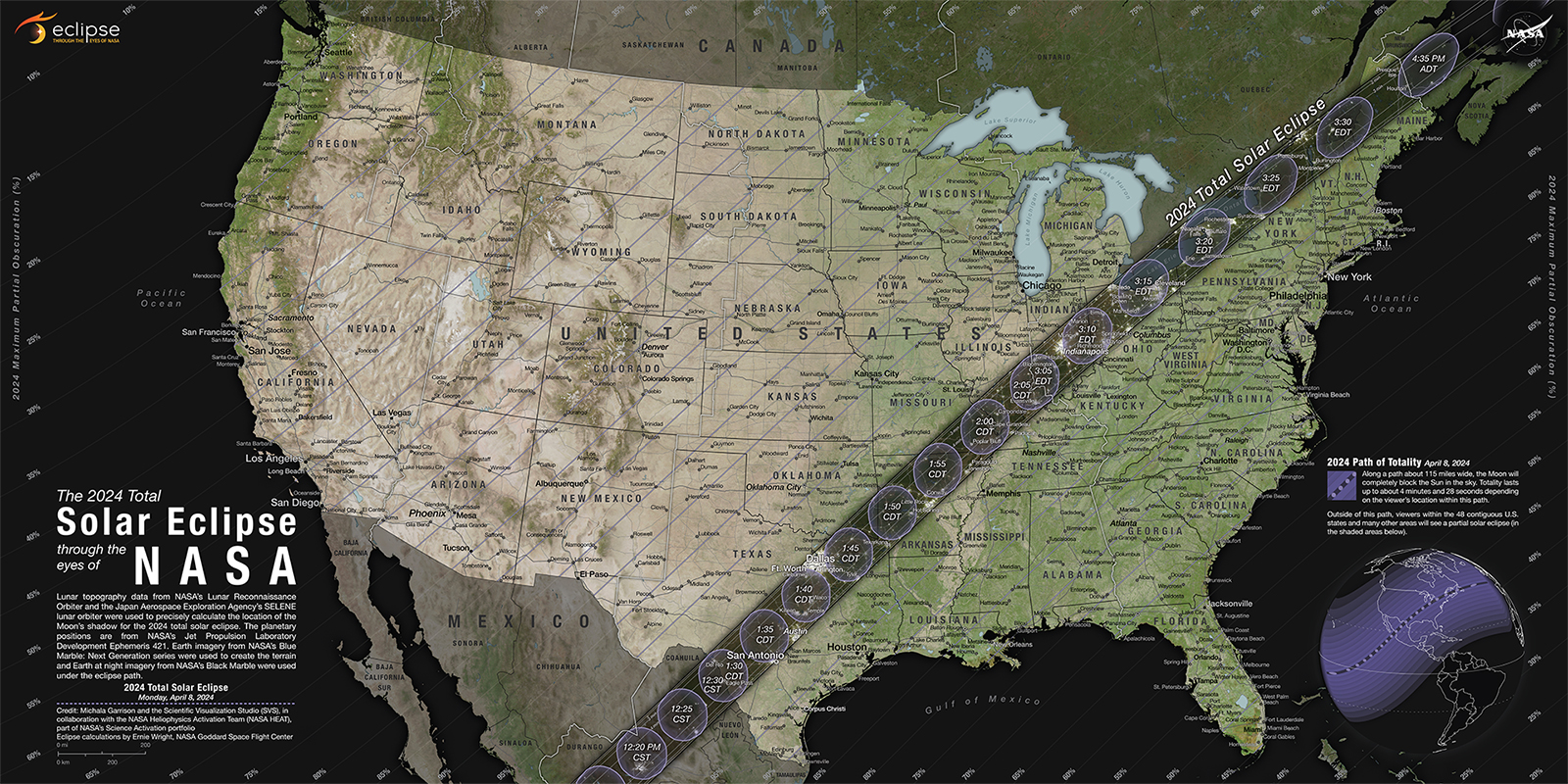
The path of totality and partial contours crossing the U.S. for the 2024 total solar eclipse occurring on April 8, 2024. (Courtesy of NASA’s Scientific Visualization Studio)
Though they are aware of the time and the date of the eclipse, clergy realize there are a lot of unknowns for an event that NASA says will occur over more densely populated regions than the path observed in 2017.
The effect of unusual levels of traffic is one worry. “The impact on our roadways from the projected number of visiting spectators is a significant safety concern before, during, and after the eclipse,” Glover said. “Then, if that is not enough, we have been notified from emergency services that part of our property will be used to station the medical helicopter for medevac purposes.”
Lifeway Baptist Church in Ellettsville, Indiana, plans to make three portable toilets and its two parking lots available for free — first come, first serve — on Monday, but Doug Stewart, pastor for member growth at the independent Baptist church northwest of Bloomington, said there’s no telling whether some people might show up even before its Sunday service begins.
“If that happens Sunday morning, then we’re just going to have to make the best of it and try and find a way in and we’ll just do whatever we can,” said Stewart. “We’re just trying to manage this incredible opportunity with an unknown potential for there being tons of people or maybe it’s just going be just a little more congested.”
Stewart said many of those who will descend on the Bloomington area — some 300,000 people, officials predict — may head to the University of Indiana’s “Hoosier Cosmic Celebration,” where “Star Trek” actor William Shatner, former astronaut Mae Jemison and “Hidden Figures” actress Janelle Monáe are scheduled to appear.
In Texas, First Christian Church in Kerrville has 110 parking spaces for viewing the eclipse, along with 10 for recreational vehicles, the latter permitted to stay overnight. “About 80 of them are spoken for and pretty sure by the end of the week, we will be full,” said its senior minister, the Rev. Joshua deSteiguer.
“It’s just a service for our neighbors and, other than that, another chance to be in awe of God’s creation,” said deSteiguer, who explained the church, a Christian Church (Disciples of Christ) congregation, is charging for the spots to cover the cost of the four portable toilets it is renting.
Kerrville, west of Austin, could grow by many times its population of about 25,000, said deSteiguer, who has already seen a change in the traffic patterns there.
“The town is already, even as we speak, seeing a little bit of an influx,” he said in an interview Wednesday. “Right now, it’s hard to tell if the town is filling up because everybody’s already starting to come in or it’s people out getting a week’s worth of groceries and gas.”
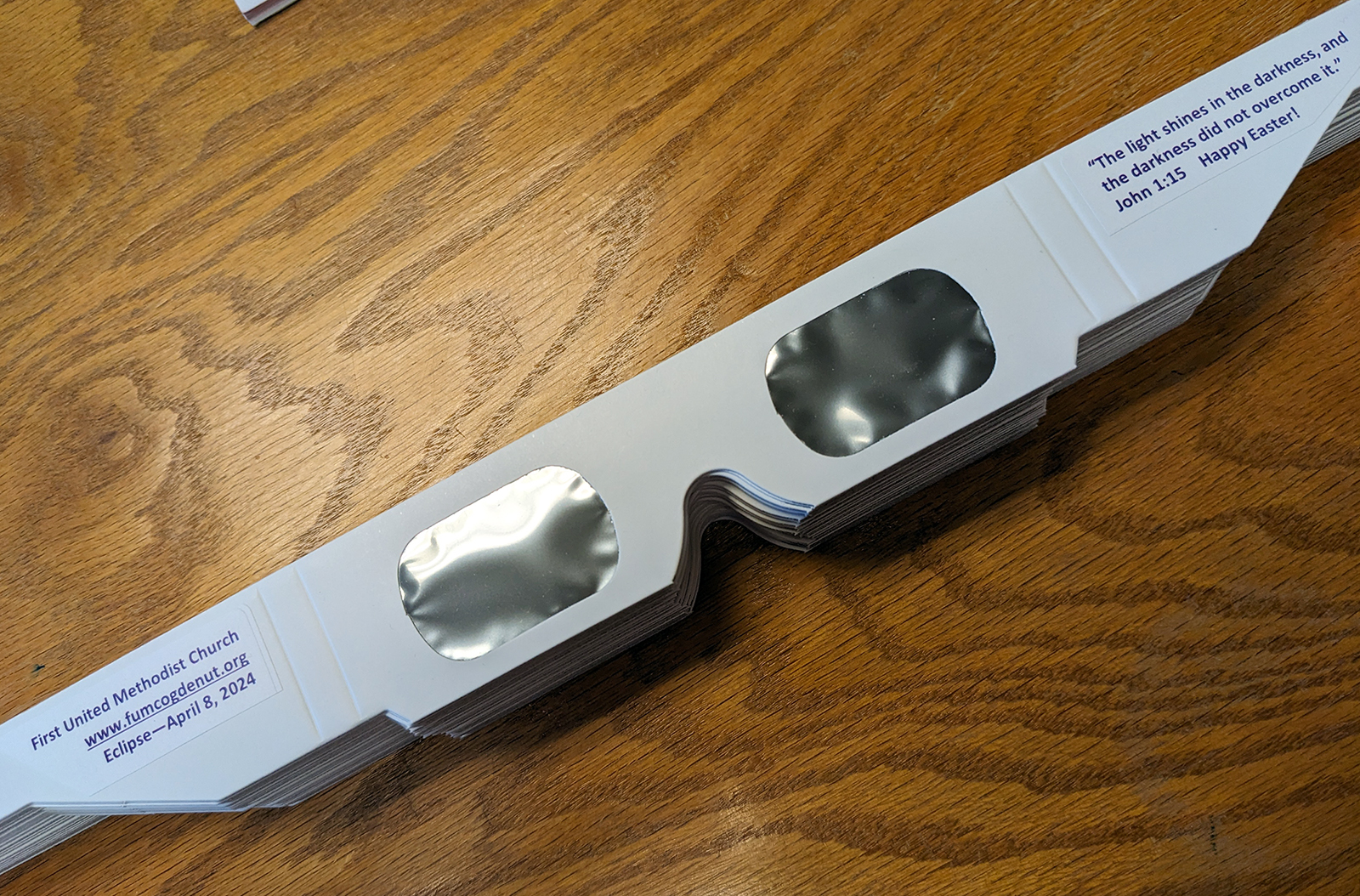
Solar eclipse glasses provided by Ogden First United Methodist Church in Marriott-Slaterville, Utah. (Photo courtesy Kim James)
Where only a partial eclipse may be viewed, out-of-town crowds will likely be sparser, and clergy have focused on preparing their own congregants for the event.
The Rev. Kim James, pastor of Ogden First United Methodist Church in Marriott-Slaterville, Utah, ordered eclipse glasses in January and distributed about 175 of them on Easter Sunday.
On one arm of the reflective glasses is the name of the church, its website address and “Eclipse – April 8, 2024,” and on the other, the words “Happy Easter!” and the verse from the Gospel of John that reads: “The light shines in the darkness, and the darkness did not overcome it.”
“I think it’s cool to celebrate God’s creation, and all that God has created, and this is a part of that,” James said. “Science is not something to be denied. Science is part of God’s wonder. And I think it’s good for us to celebrate that as Christians.”
Between announcements about the Easter egg hunt that was moved indoors due to rain and the plans for telling jokes for the following Sunday’s emphasis on “holy humor,” James held up the glasses and showed how to wear them safely.
As she concluded her sermon, she noted that the next view of a total eclipse in North America will not occur for 20 years. Utahns will see about 47% of the one on Monday if clouds do not obscure the event for them.
“Since there won’t be another total eclipse in North America until 2044, I thought we should make the most of this one,” she said. “As the moon rolls over the sun and darkens the earth and then rolls off the sun, you can use these eclipse glasses to look skyward and think about how light came on that Easter day when the stone was rolled away from the tomb.”
Haarsma, of BioLogos, said the solar-lunar experience provides not only an opportunity for churches to reach out to their communities but for often-polarized community members to connect with each other.
“The sun and the moon are unaware of the challenges in our culture, but they’re putting on this amazing show for us and God’s creation is setting up in a way that we get to see this glorious event,” she said. “And that makes it a great time for us to come together across all stripes and communities and flavors of America. We can all enjoy this event and I hope people do.”

